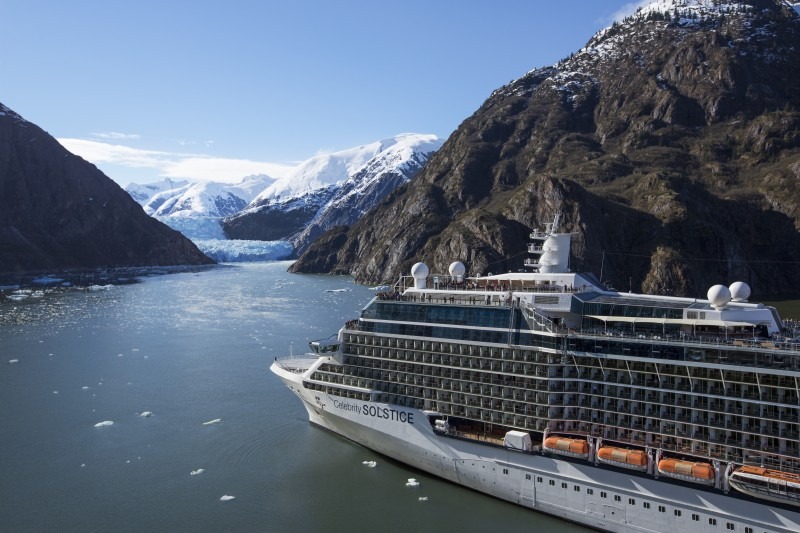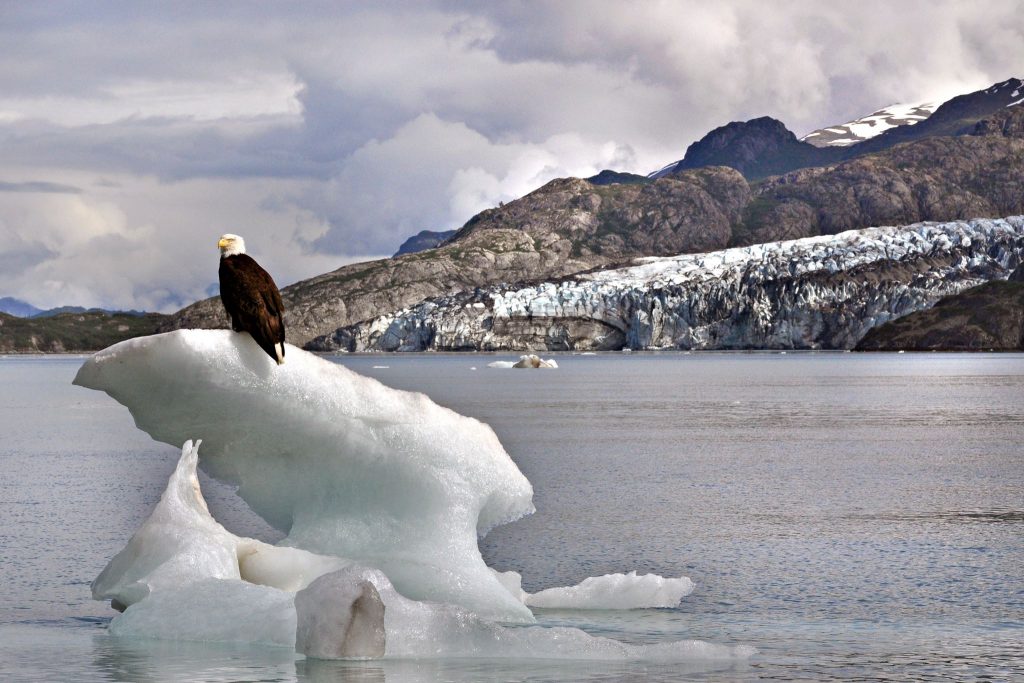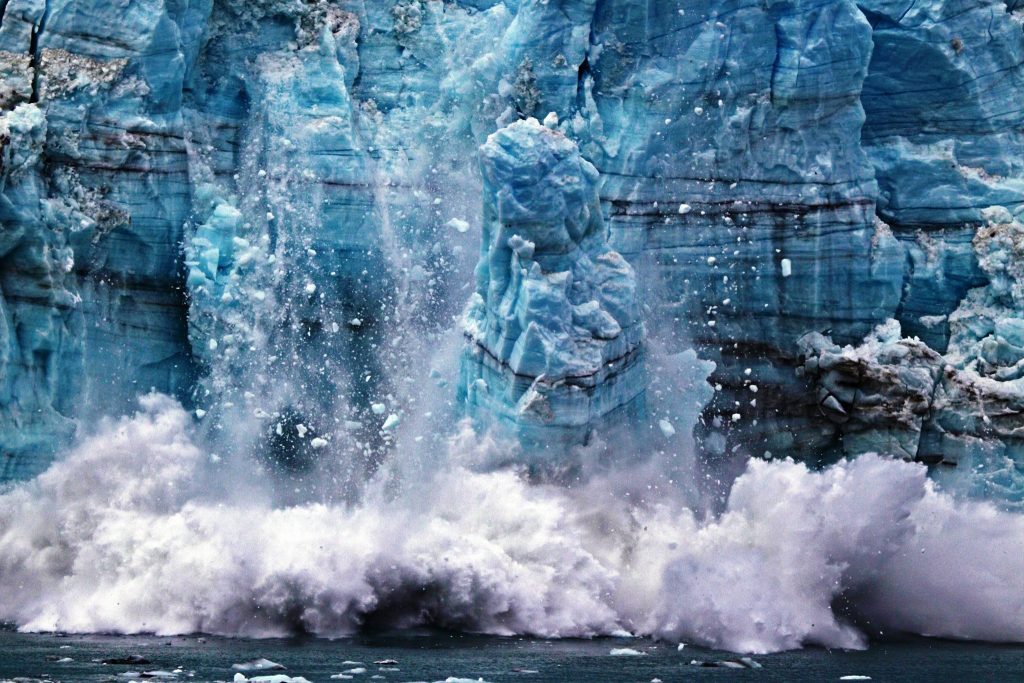You won’t have to use your imagination to understand why the Huna Tlingit consider Glacier Bay to be their spiritual homeland. Advancing glaciers drove them out for a time during the middle of the 18th century, but retreating ice has been drawing them home in recent years. Crystaline waters filled with ghostly glaciers are surrounded by the Fairweather Mountain Range and shimmer under skies full of bald eagles, ravens, and a variety of seabirds. Glacier Bay National Park is surrounded by millions of square miles of pristine wilderness environment, including temperate rain forests, deep, mysterious fjords, and wild coastlines.
Getting to Glacier Bay National Park
Accessing Glacier Bay is only possible by air or sea, with most guests experiencing it from the deck of a cruise ship. However, it’s important when planning your cruise to realize that the National Park Service has limited trips to 153 visits per year, so not every Inside Passage Cruise will feature Glacier Bay as the grand finale.

Celebrity Solstice in Alaska | Photo: Celebrity Cruises
Every 10 years, the National Park Service goes through a very detailed application process designed to award cruise companies with contracts to visit Glacier Bay. Decisions are made on the basis of the ships to meet stringent environmental standards as well as the visitor experience they’re able to provide. The National Park Service also specifies that only two cruise ships at a time are allowed to enter Glacier Bay, and the speed at which the ships are allowed to glide through the emerald waters is kept to a minimum to avoid disturbing the Humpback Whales and other sea life that call Glacier Bay home.
Glacier Bay cruises don’t involve land tours or docking at any point. The average ship stays in the bay for a period of eight hours. Park Rangers provide informative talks on the natural history of the area, and evening before your arrival, you’ll receive an insider’s guide and a map provided by the National Park Service. Here’s some of what you’ll see during your time in Glacier Bay:
Seeing Humpback Whales
Over 50 feet long and capable of expelling air at speeds of more than 600 mph, Humpback Whales routinely amaze Glacier Bay visitors with their acrobatics. These whales winter in the warm waters of Mexico or Hawaii, returning to the protected waters of Glacier Bay for summertime feasting in the region’s rich waters. The average Humpback Whale feeds about 23 hours a day, consuming as much as a half-ton of food during that time.

A humpback whale breaches | Photo: Silversea Cruises
Humpback Whale populations were once in rapid decline, but numbers are bouncing back thanks to conservation efforts. As a designated whale sanctuary, Glacier Bay, provides the species with the highest possible level of protection. It also serves as an important scientific research and monitoring site. The whales begin to arrive in Glacier Bay during the latter part of June and start to head the tropics during the first part of September, so be sure to schedule your cruise accordingly if you’re set on seeing these giants of the sea.
RELATED: Port Guide: Juneau
Other sea mammals you’ll see during your visit to Glacier Bay include Stellar sea lions, harbour seals, harbour dolphins, sea otters, and orcas.
Getting to Shore
About 40 species of land mammals make their home in the meadows, mountains, and forests surrounding Glacier Bay National Park. Cruise ship guests are often able to view bald eagles, black and brown bears, moose, red squirrels, mountain goats, and porcupines. Be sure to pack a good pair of travel binoculars so that you don’t miss out on these once-in-a-lifetime viewing opportunities. A high-powered zoom lens on a quality camera lets visitors capture invaluable mementos to take home.

Glacier Bay teems with life of all kinds | Photo: Glacier Bay National Park/Facebook
Those with their hearts set on seeing Alaska’s black and brown bears should plan their visits from the middle of August through the end of the season in September when the bears are getting ready for the long winter ahead by gorging themselves on as much salmon as possible. If you want to see mountain goats, point your binoculars up toward the upper slopes of Mt. Fairweather and surrounding mountains.
Most travelers returning from a visit to Glacier Bay say that watching the glaciers calve was the highlight of their trip. Calving refers to chunks of ice breaking loose from the main iceberg and falling into the sea. The best time to see this in Glacier Bay is later in the cruise season such as August and September when temperatures have been consistently above freezing for long enough to allow the glaciers to begin to melt.

A glacier calves into the sea | Photo: Glacier Bay National Park/Facebook
Glacier Bay National Park cruises are highly coveted among those who visit Alaska’s Inside Passage. Spots are limited, so make your reservations early if you want to be among the lucky travelers who get to enjoy a visit to Glacier Bay.

